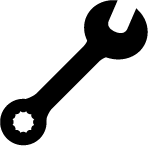4 Helpful Tips For Locating Plumbing Leaks
A plumbing system is a significant asset in any modern home. If your plumbing system has sprung a leak, it can quickly turn from luxury to nightmare.
Plumbing leaks can cause your water bill to rise. A leak can also cause serious structural damage to your home.
The ability to find the source of the leak is essential when it comes to repairing the leak and restoring the efficiency of your plumbing system. Use these tips to help you successfully hunt for plumbing leaks in your home in the future.
1. Examine All Toilets
The toilets in your home consume a large amount of water each day. When a toilet begins to leak, water consumption can increase rapidly. Luckily, toilet leaks are fairly easy to identify.
Start by lifting the lid to your toilet's tank. Listen closely for any hissing sounds that are produced when water leaks through small cracks or fissures in your pipes. If you don't hear any audible hissing, you can check to see if the tank is leaking water into your toilet bowl.
Place a few drops of food coloring into the tank. Allow the food coloring to sit, then check the bowl after several minutes. Any evidence of the food coloring in the bowl indicates a leak.
You can have a plumber help you pinpoint the component responsible for the leak. Repairs can then be made to ensure your toilets operate without leaking.
2. Inspect the Water Heater's Tank
Many homes are equipped with water heaters that rely on storage tanks to function properly. These storage tanks can begin to deteriorate over time. A damaged or corroded water heater tank can easily spring a leak.
Checking for water heater tank leaks is a simple process. You simply need to inspect the area around the tank itself. Water will begin to pool beneath the tank when a leak is present.
Tinkering with a water heater can be extremely dangerous. You must contact a plumbing professional to address a tank leak if you want to restore the integrity of your water heater.
3. Check Outdoor Faucets
Most homes are equipped with at least one outdoor water faucet. These faucets are prone to developing leaks because they are exposed to the elements on a continual basis.
Some of the leaks that affect outdoor faucets may not be visible to the naked eye. In order to identify these leaks, you will need a metal screwdriver.
Place the metal part of the screwdriver on the metal part of your outdoor faucet's hose bib. Place your thumb's knuckle at the opposite end of the screwdriver, then place your ear directly onto the thumb knuckle.
This transforms the screwdriver into a makeshift stethoscope that can help you hear any leaks hidden within your plumbing system.
4. Check Plumbing Connections
The points where two pieces of plumbing are connected together are often the source of leaks. There are multiple plumbing connections within your home, and you will need to investigate each of these connection points to pinpoint a leak.
Start by examining all showerheads and faucets for loose connections. Look underneath sinks to determine if pipe fittings are functioning properly. Even a small leak at a connection point has the potential to wreak havoc on your home over time.
Reach out to an experienced plumber for help when you identify leaky connections in your home.
If you suspect that your plumbing system has started to leak, a bit of simple detective work can help you pinpoint the location of the leak. Finding the location of the leak makes it easier for a plumber to make the repairs needed to restore the integrity of your plumbing system in the future.
Share
